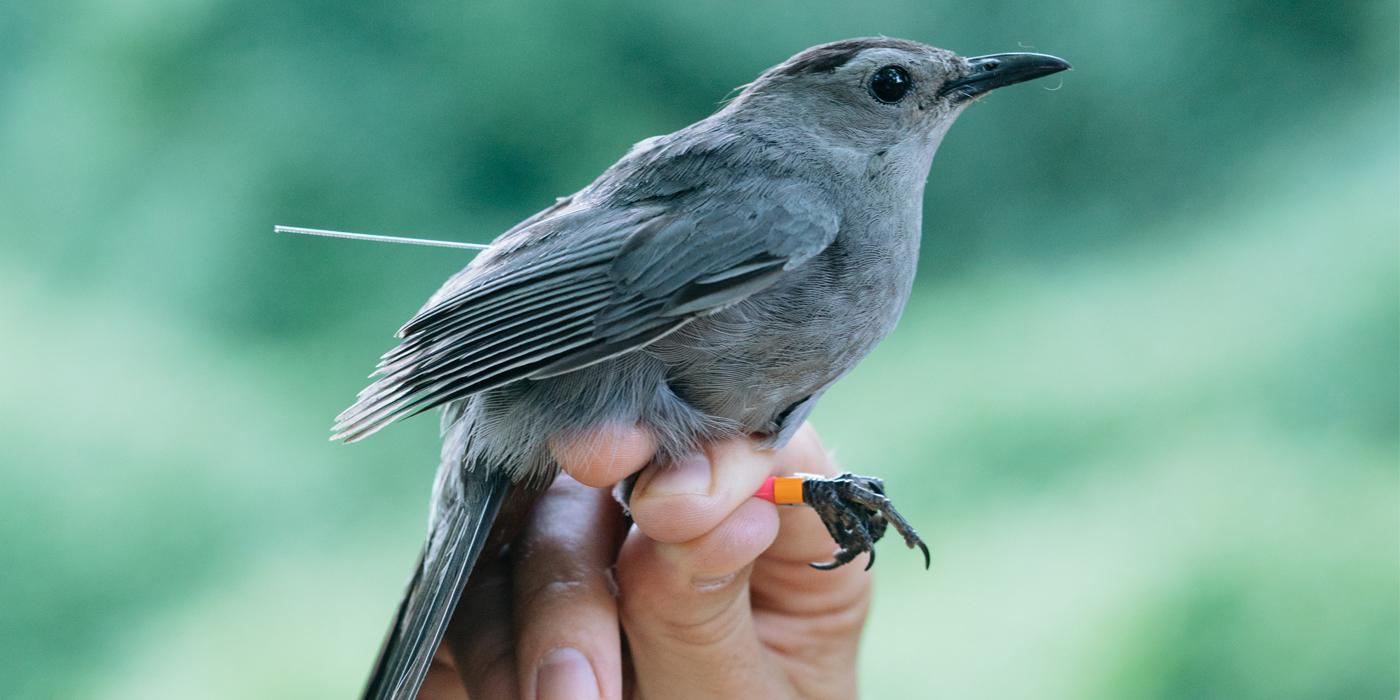Gray Catbirds
Smithsonian Migratory Bird Center scientists study gray catbirds to better understand a common migratory bird that breeds within human-dominated urban and suburban landscapes. Gray catbirds are a charismatic backyard breeder occurring across a diverse gradient from rural forest edges to high urban landscapes, such as the National Mall in Washington, D.C. Because they are present in various habitats and are a local migrant, catbirds are a great model for several signature SMBC projects, including urbanization studies of breeding behavior and success, and migration tracking.
Male and female catbirds may look alike, but a number of physical and behavioral differences set them apart. A study by SMBC scientist Brandt Ryder found that large body size is a feature that appears to factor into females' mating preferences. While catbirds are known for their cat-like “mew” call, male catbirds copy the songs of other species of birds and mimic other sounds, such as sirens, cell phones and alarms. Little is known about how the sound environment affects their song repertoire and how these vocal signals impact the mating choices made by females.
Human noises, such as traffic, construction and ringing cell phones, shape the acoustic environment and may impact the effectiveness of the courtship songs of males and the signals preferred by females. Losing other bird species due to urban development and habitat loss may also impact the sounds that male catbirds have the opportunity to copy. Smithsonian postdoctoral fellow Dana Moseley is collaborating with Ryder to investigate how urbanization shapse catbird song and female preferences.
Do city parks support birds? Urbanization may also impact other aspects of catbirds’ breeding success. SMBC researchers are examining whether local urban parks can support catbirds through the stages of nesting and fledging of offspring. Various factors, such as the amount of native plates, canopy cover, impervious surfaces (buildings and asphalt) and the noise environment, may play a role in how many offspring catbirds are able to raise successfully when compared to birds in less urban habitats.
Migratory birds travel thousands of miles each year and are impacted by a diversity of habitats during their journey. Ryder has been studying how events during the annual cycle impact the timing of spring and fall migration. SMBC researchers are tracking gray catbirds by tagging them with lightweight GPS backpacks that take highly accurate points trhoughout winter and during fall and spring migration.
Birds are being tagged in the greater Washington, D.C., area, Massachusetts, Georgia and Colorado to better understand how diverse breeding habitats (including urban environments) influence when birds leave, where they stop and where they winter on their long migratory journeys. Ryder is asking a host of questions, including: where do different populations winter, do all birds from the same breeding area take the same migration route or winter in the same place, and how do wintering conditions affect summer breeding success?












